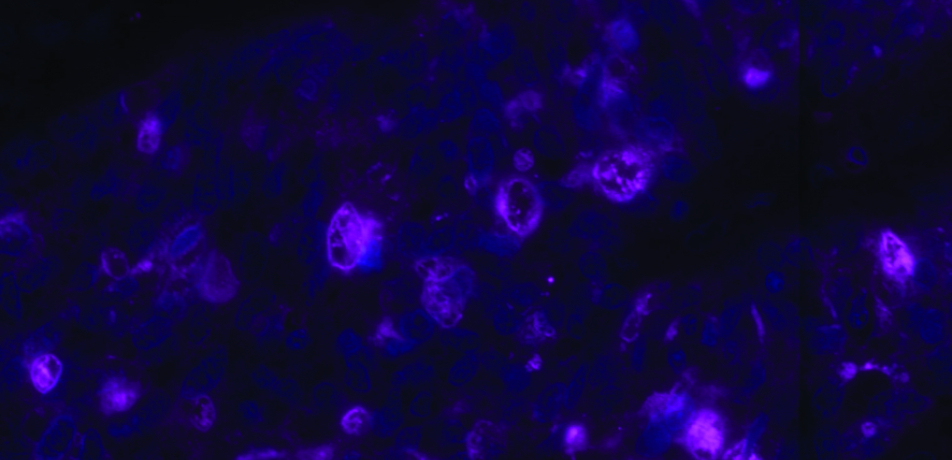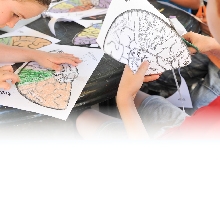The fungus living among us
Briefs

Fungi (pink) inside the cells of a human ovarian tumor (cell nuclei are in blue). (Image from the Straussman lab)
Cancer tumors contain multiple species of fungi that differ per tumor type—findings that may improve diagnosis and treatment, as well as the detection of cancer through a blood test, according to a recent study led by researchers at the Weizmann Institute of Science and the University of California, San Diego.
The findings, published in Cell, complement scientists’ understanding of the interaction between cancer cells and the bacteria that exist in tumors alongside fungi—bacteria that have been shown to affect cancer growth, metastasis, and response to therapy.
The researchers profiled fungal communities in over 17,000 tissue and blood samples taken from patients with 35 different cancer types. The group detected fungi in all of these cancer types, mostly “hiding” inside the cancer cells or in immune cells inside the tumors.
The study further revealed multiple correlations between the presence of specific fungi in tumors and treatment responsiveness. For example, breast cancer patients whose tumors contained Malassezia globosa—a fungus found naturally on the skin—had a much lower survival rate than those whose tumors did not have the fungus. In addition, specific fungi were found to be more prevalent in the breast tumors of older patients versus younger ones, in the lung tumors of smokers versus nonsmokers, and in the melanoma tumors that did not respond to immunotherapy versus those that did respond.
These findings suggest that fungal activity may become “a new hallmark of cancer,” says Prof. Ravid Straussman of the Department of Molecular Cell Biology, who co-led the study with Prof. Tzachi Pilpel from the Department of Molecular Genetics and Prof. Rob Knight from UCSD. “These findings should drive us to better explore the potential effects of tumor fungi and to re-examine almost everything we know about cancer through a ‘microbiome lens,’” Prof. Straussman says.
By characterizing both the fungi and the bacteria that are present in human tumors, the researchers demonstrated that typical “hubs” of fungi and bacteria can be found in tumors. For example, while tumors that contain Aspergillus fungi tend to have specific bacteria in them, tumors that contain Malassezia fungi tend to have other bacteria in them. These different “hubs” may be important for treatment, as they were shown to correlate with both tumor immunity and patient survival.
“This study sheds new light on the complex biological environment within tumors, and future research will reveal how fungi affect cancerous growth,” says Prof. Pilpel. “The fact that fungi can be found not only in cancer cells but also in immune cells implies that, in the future, we’ll probably find that fungi have some effect not only on the cancer cells but also on immune cells and their activity.”
Ravid Straussman is supported by:
- Dr. Chantal d’Adesky Scheinberg Research Fund
- Dwek Institute for Cancer Therapy Research
- Moross Integrated Cancer Center
- Dr. Gilbert S. Omenn and Martha A. Darling Weizmann Institute - Schneider Hospital Fund for Clinical Breakthroughs through Scientific Collaborations
- Swiss Society Institute for Cancer Prevention Research
- Dr. Dvora and Haim Teitelbaum Endowment Fund
Tzachi Pilpel is supported by:
- Azrieli Institute for Systems Biology
- Braginsky Center for the Interface between Science and the Humanities
- Leo and Julia Forchheimer Center for Molecular Genetics
- Kahn Family Research Center for Systems Biology of the Human Cell
- Helen and Martin Kimmel Award for Innovative Investigation
- Ben May Professorial Chai








